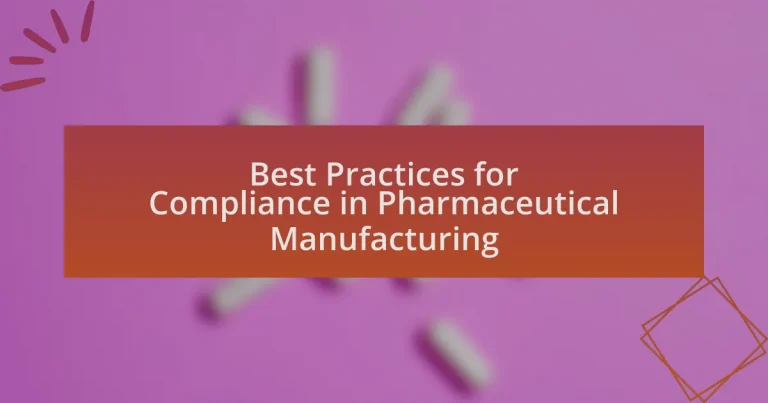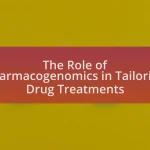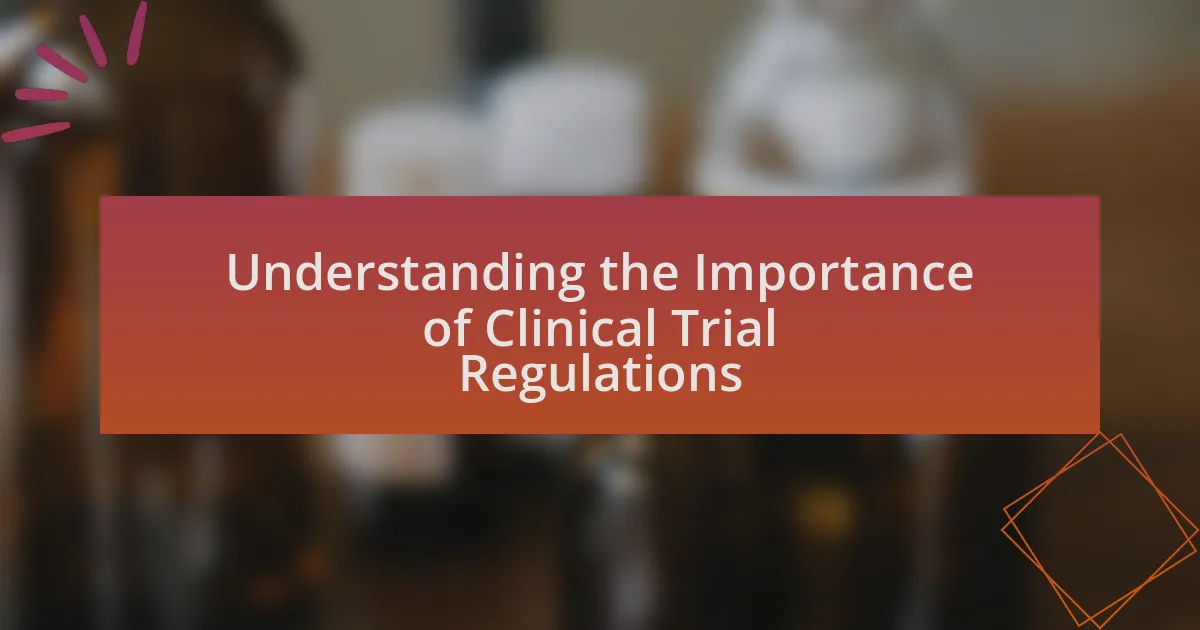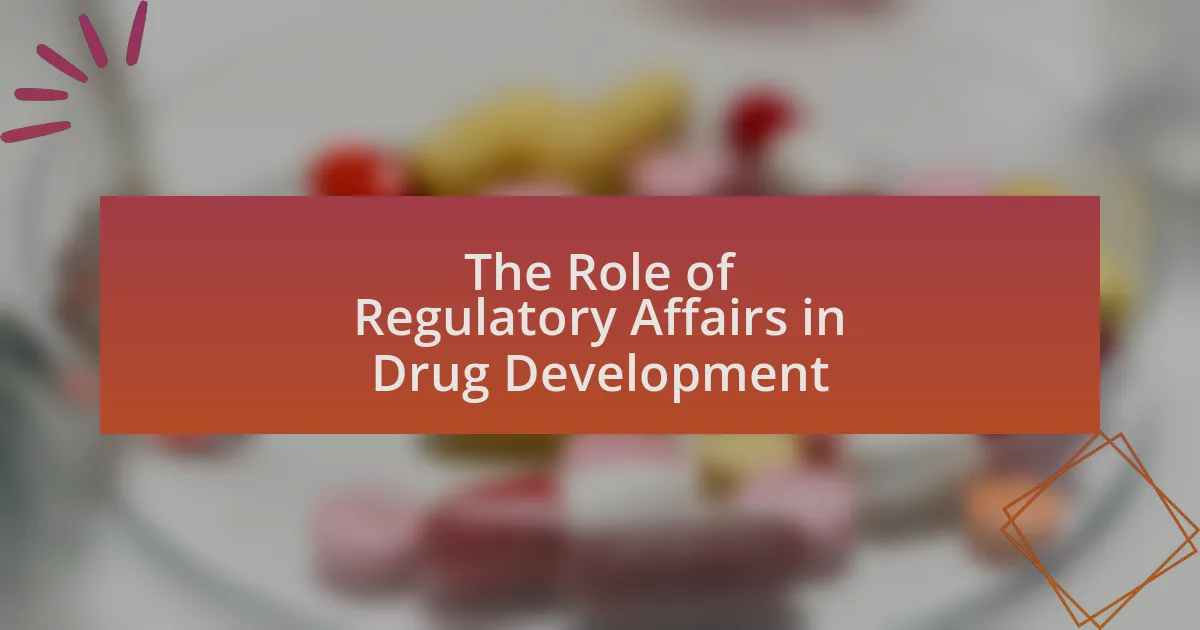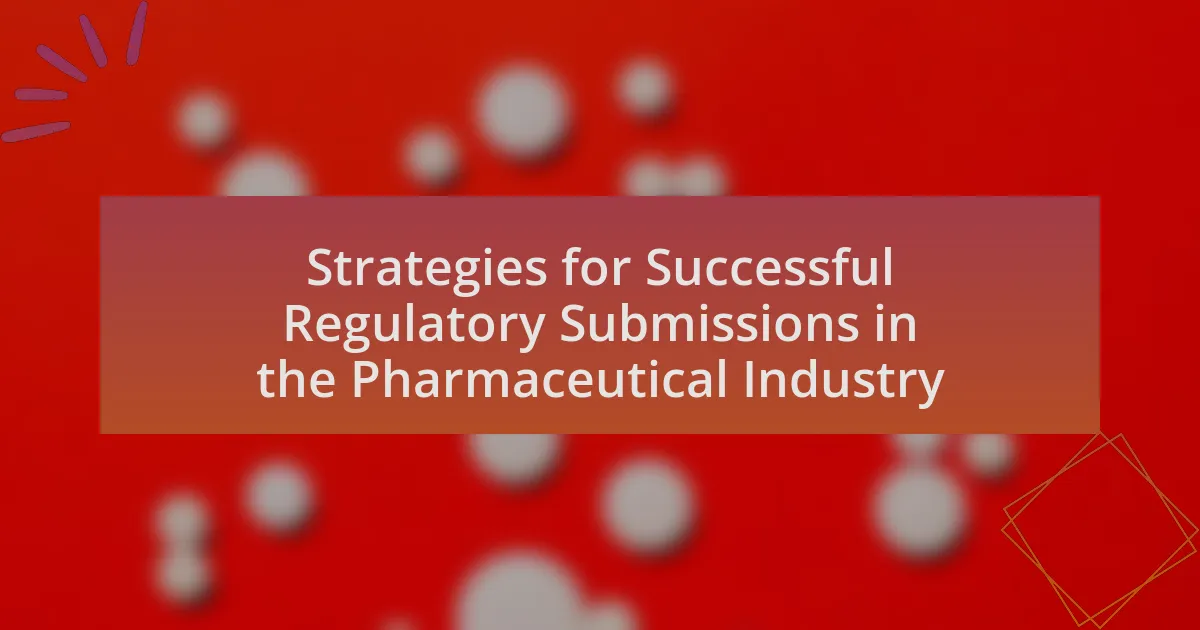The article focuses on best practices for compliance in pharmaceutical manufacturing, emphasizing the importance of adhering to Good Manufacturing Practices (GMP) and implementing robust quality management systems. It outlines critical components such as regular audits, employee training, and the integration of technology to enhance compliance. The discussion includes the consequences of non-compliance, the impact on product quality and safety, and the regulatory frameworks governing the industry. Additionally, it highlights strategies for overcoming challenges in maintaining compliance and the essential metrics for evaluating compliance effectiveness.
What are the Best Practices for Compliance in Pharmaceutical Manufacturing?
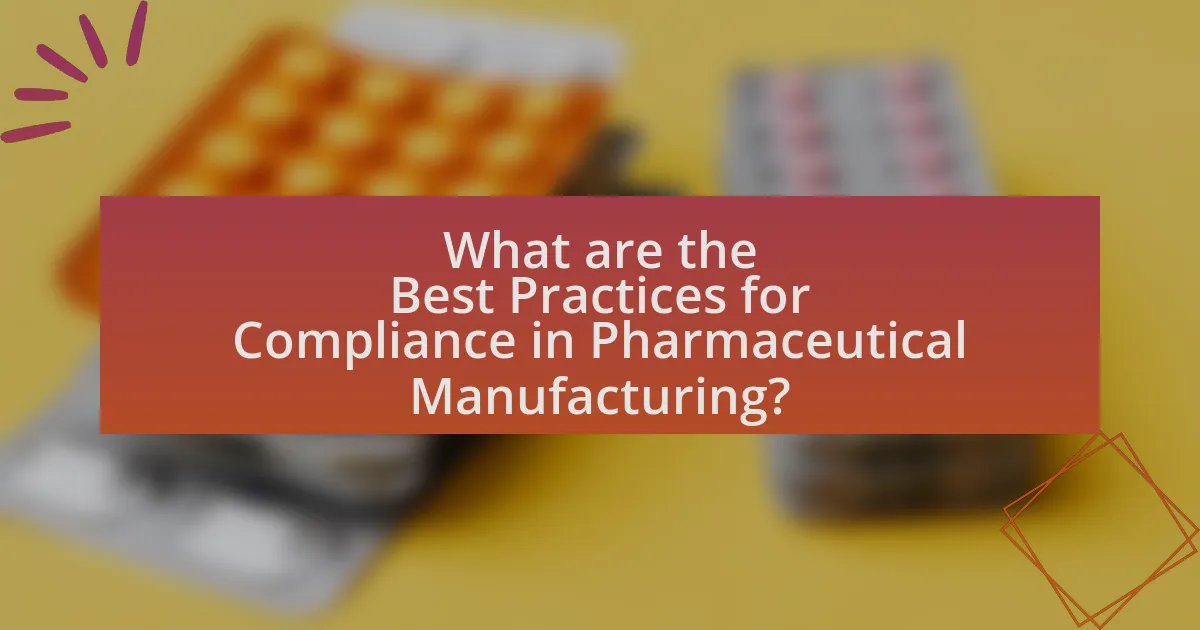
The best practices for compliance in pharmaceutical manufacturing include adhering to Good Manufacturing Practices (GMP), implementing robust quality management systems, conducting regular audits, and ensuring thorough employee training. GMP guidelines, established by regulatory agencies like the FDA, ensure that products are consistently produced and controlled according to quality standards. A quality management system helps in identifying and mitigating risks throughout the manufacturing process. Regular audits, both internal and external, are essential for identifying compliance gaps and ensuring adherence to regulations. Additionally, comprehensive training programs for employees ensure that they are aware of compliance requirements and best practices, which is crucial for maintaining product quality and safety.
Why is compliance critical in pharmaceutical manufacturing?
Compliance is critical in pharmaceutical manufacturing because it ensures the safety, efficacy, and quality of pharmaceutical products. Adhering to regulatory standards, such as those set by the FDA and EMA, minimizes the risk of contamination, errors, and product recalls, which can have severe consequences for public health. For instance, a study by the FDA indicated that non-compliance can lead to significant financial losses and damage to a company’s reputation, as seen in cases where contaminated products resulted in widespread health issues. Therefore, compliance not only protects consumers but also safeguards the integrity of the pharmaceutical industry.
What are the potential consequences of non-compliance?
The potential consequences of non-compliance in pharmaceutical manufacturing include legal penalties, financial losses, and damage to reputation. Legal penalties can manifest as fines imposed by regulatory bodies, which can reach millions of dollars depending on the severity of the violation. Financial losses may arise from product recalls, increased operational costs, and loss of market share due to diminished consumer trust. Additionally, damage to reputation can lead to long-term impacts on business relationships and customer loyalty, as companies found non-compliant may struggle to regain credibility in the market. These consequences underscore the critical importance of adhering to compliance standards in the pharmaceutical industry.
How does compliance impact product quality and safety?
Compliance directly enhances product quality and safety by ensuring adherence to established regulations and standards in pharmaceutical manufacturing. Regulatory frameworks, such as Good Manufacturing Practices (GMP), mandate rigorous testing, documentation, and quality control processes that minimize risks of contamination, errors, and defects. For instance, a study published in the Journal of Pharmaceutical Sciences found that companies adhering to GMP significantly reduced product recalls and safety incidents, demonstrating a clear correlation between compliance and improved product outcomes.
What regulatory frameworks govern pharmaceutical manufacturing compliance?
The regulatory frameworks that govern pharmaceutical manufacturing compliance include the Food and Drug Administration (FDA) regulations in the United States, the European Medicines Agency (EMA) guidelines in Europe, and the International Conference on Harmonisation (ICH) guidelines globally. These frameworks establish standards for Good Manufacturing Practices (GMP), ensuring that pharmaceutical products are consistently produced and controlled according to quality standards. For instance, the FDA’s Title 21 of the Code of Federal Regulations (CFR) outlines specific requirements for manufacturing processes, quality control, and documentation, which are critical for maintaining compliance and ensuring patient safety.
What are the key regulations and guidelines to be aware of?
The key regulations and guidelines to be aware of in pharmaceutical manufacturing include the FDA’s Current Good Manufacturing Practice (CGMP) regulations, the International Organization for Standardization (ISO) standards, and the European Medicines Agency (EMA) guidelines. CGMP regulations ensure that products are consistently produced and controlled according to quality standards, which is critical for ensuring safety and efficacy. ISO standards, such as ISO 9001, provide a framework for quality management systems, promoting continuous improvement and customer satisfaction. EMA guidelines outline the requirements for the quality, safety, and efficacy of medicinal products in the European Union, ensuring compliance with regulatory expectations. These regulations and guidelines are essential for maintaining compliance and ensuring the integrity of pharmaceutical products.
How do international regulations differ from local regulations?
International regulations differ from local regulations primarily in their scope and enforcement mechanisms. International regulations, such as those set by the World Health Organization or the International Conference on Harmonisation, apply across multiple countries and aim to create uniform standards for safety, efficacy, and quality in pharmaceutical manufacturing. In contrast, local regulations are specific to individual countries or regions and may vary significantly in their requirements and enforcement practices. For example, the U.S. Food and Drug Administration enforces regulations that may differ from those of the European Medicines Agency, reflecting local health priorities and legal frameworks. This divergence can lead to challenges for pharmaceutical companies operating in multiple jurisdictions, as they must navigate both sets of regulations to ensure compliance.
What are the essential components of a compliance program?
The essential components of a compliance program include a code of conduct, risk assessment, training and education, monitoring and auditing, reporting mechanisms, and enforcement and discipline. A code of conduct establishes the ethical standards and expectations for behavior within the organization. Risk assessment identifies potential compliance risks specific to the pharmaceutical industry, allowing for targeted strategies. Training and education ensure that employees understand compliance requirements and their responsibilities. Monitoring and auditing provide ongoing evaluation of compliance efforts and effectiveness. Reporting mechanisms facilitate the safe and anonymous reporting of compliance concerns. Finally, enforcement and discipline ensure that violations are addressed consistently and fairly, reinforcing the importance of compliance. These components collectively create a robust framework that helps organizations adhere to regulatory requirements and ethical standards in pharmaceutical manufacturing.
How can risk assessment be integrated into compliance practices?
Risk assessment can be integrated into compliance practices by systematically identifying, evaluating, and mitigating risks associated with regulatory requirements in pharmaceutical manufacturing. This integration involves developing a risk management framework that aligns with compliance objectives, ensuring that potential compliance failures are proactively addressed. For instance, the FDA emphasizes the importance of risk-based approaches in its guidance documents, which state that companies should prioritize resources towards areas of highest risk to ensure compliance and product quality. By utilizing tools such as Failure Mode and Effects Analysis (FMEA) or Risk Priority Numbers (RPN), organizations can quantify risks and implement controls that enhance compliance with regulatory standards.
What role does training play in ensuring compliance?
Training plays a critical role in ensuring compliance by equipping employees with the necessary knowledge and skills to adhere to regulatory standards. Effective training programs inform staff about relevant laws, regulations, and internal policies, thereby reducing the risk of non-compliance. For instance, the FDA mandates that pharmaceutical companies provide training to ensure that employees understand Good Manufacturing Practices (GMP), which are essential for maintaining product quality and safety. Studies have shown that organizations with robust training programs experience fewer compliance violations, highlighting the direct correlation between comprehensive training and adherence to regulatory requirements.
How can technology enhance compliance in pharmaceutical manufacturing?
Technology enhances compliance in pharmaceutical manufacturing by automating processes, ensuring data integrity, and facilitating real-time monitoring. Automation reduces human error in critical tasks such as data entry and batch processing, which are essential for maintaining compliance with regulatory standards. For instance, the implementation of electronic batch records (EBRs) allows for accurate documentation and traceability, which are vital for audits and inspections. Additionally, technologies like IoT sensors and advanced analytics enable continuous monitoring of manufacturing conditions, ensuring adherence to Good Manufacturing Practices (GMP). According to a report by the International Society for Pharmaceutical Engineering, companies that adopt these technologies can achieve up to a 30% reduction in compliance-related issues, demonstrating the effectiveness of technology in enhancing compliance in this sector.
What types of software solutions are available for compliance tracking?
There are several types of software solutions available for compliance tracking, including regulatory compliance management systems, document management systems, audit management software, and risk management software. Regulatory compliance management systems help organizations ensure adherence to industry regulations by automating compliance processes and tracking regulatory changes. Document management systems facilitate the organization, storage, and retrieval of compliance-related documents, ensuring that all necessary documentation is accessible and up-to-date. Audit management software streamlines the audit process by providing tools for planning, executing, and reporting audits, which is crucial for maintaining compliance. Risk management software identifies, assesses, and mitigates risks associated with compliance, enabling organizations to proactively address potential issues. These software solutions are essential for maintaining compliance in the pharmaceutical manufacturing sector, where adherence to regulations is critical for operational integrity and safety.
How can automation improve compliance processes?
Automation can significantly improve compliance processes by enhancing accuracy, efficiency, and traceability in regulatory adherence. By implementing automated systems, pharmaceutical manufacturers can reduce human error, ensuring that data collection and reporting are consistent and reliable. For instance, automated data logging systems can capture real-time information during production, which helps maintain compliance with Good Manufacturing Practices (GMP) and other regulatory standards. Additionally, automation facilitates easier audits and inspections by providing readily accessible and organized records, thereby streamlining compliance verification processes.
What are the common challenges faced in maintaining compliance?
Common challenges faced in maintaining compliance include evolving regulations, resource constraints, and employee training deficiencies. Evolving regulations require organizations to continuously adapt their processes and documentation to meet new standards, which can be resource-intensive. Resource constraints often limit the ability to implement necessary compliance measures, leading to potential lapses. Additionally, employee training deficiencies can result in a lack of understanding of compliance requirements, increasing the risk of non-compliance. According to a survey by the Compliance Institute, 60% of organizations reported that keeping up with regulatory changes is their biggest compliance challenge.
How can organizations address resource limitations for compliance?
Organizations can address resource limitations for compliance by implementing technology solutions that automate compliance processes. Automation reduces the need for extensive manual labor, allowing organizations to allocate limited resources more efficiently. For instance, using compliance management software can streamline documentation, track regulatory changes, and ensure timely reporting, which is crucial in the pharmaceutical manufacturing sector where adherence to regulations is mandatory. According to a study by the Pharmaceutical Compliance Forum, companies that adopted automated compliance systems reported a 30% reduction in compliance-related costs, demonstrating the effectiveness of technology in overcoming resource constraints.
What strategies can be employed to overcome cultural resistance to compliance?
To overcome cultural resistance to compliance, organizations can implement strategies such as fostering open communication, providing comprehensive training, and involving employees in the compliance process. Open communication allows employees to voice concerns and understand the importance of compliance, which can reduce resistance. Comprehensive training ensures that all staff members are aware of compliance requirements and the rationale behind them, thereby increasing buy-in. Involving employees in the compliance process, such as through feedback mechanisms or compliance committees, empowers them and can lead to a more positive attitude towards compliance initiatives. These strategies are supported by research indicating that employee engagement and clear communication significantly enhance compliance adherence in organizations.
What are the best practices for auditing and monitoring compliance?
The best practices for auditing and monitoring compliance in pharmaceutical manufacturing include establishing a robust compliance framework, conducting regular internal audits, and implementing continuous monitoring systems. A robust compliance framework ensures that all regulatory requirements are met, while regular internal audits help identify gaps and areas for improvement. Continuous monitoring systems utilize real-time data to track compliance metrics, enabling timely corrective actions. According to the FDA, companies that adopt these practices can significantly reduce the risk of non-compliance and enhance product quality, as evidenced by improved inspection outcomes and reduced warning letters.
How often should compliance audits be conducted?
Compliance audits should be conducted at least annually in pharmaceutical manufacturing. This frequency aligns with regulatory requirements and industry standards, ensuring that organizations remain compliant with Good Manufacturing Practices (GMP) and other relevant regulations. Regular audits help identify potential non-compliance issues and facilitate timely corrective actions, thereby maintaining product quality and safety.
What metrics should be used to evaluate compliance effectiveness?
To evaluate compliance effectiveness in pharmaceutical manufacturing, key metrics include audit findings, training completion rates, deviation rates, and corrective action implementation timelines. Audit findings provide insight into compliance gaps, while training completion rates indicate employee preparedness. Deviation rates measure the frequency of non-compliance incidents, and corrective action implementation timelines assess the responsiveness of the organization to compliance issues. These metrics collectively offer a comprehensive view of compliance effectiveness, ensuring that regulatory standards are met and maintained.
What are the key takeaways for ensuring compliance in pharmaceutical manufacturing?
Key takeaways for ensuring compliance in pharmaceutical manufacturing include strict adherence to Good Manufacturing Practices (GMP), regular training for employees, and thorough documentation of all processes. GMP guidelines, established by regulatory bodies like the FDA, ensure that products are consistently produced and controlled according to quality standards. Regular training helps employees stay updated on compliance requirements and operational procedures, reducing the risk of errors. Additionally, maintaining detailed records of manufacturing processes, quality control tests, and deviations is essential for accountability and traceability, which are critical during inspections and audits.
How can organizations foster a culture of compliance?
Organizations can foster a culture of compliance by implementing comprehensive training programs that emphasize the importance of regulatory adherence. These programs should be tailored to the specific needs of the pharmaceutical industry, ensuring that employees understand both the legal requirements and the ethical implications of their work. Research indicates that organizations with robust training initiatives see a significant reduction in compliance violations, as employees are better equipped to recognize and address potential issues. Furthermore, establishing clear communication channels for reporting concerns and recognizing compliance achievements can reinforce the commitment to a compliant workplace.
What practical tips can be implemented for continuous compliance improvement?
To achieve continuous compliance improvement in pharmaceutical manufacturing, organizations should implement regular training programs for employees to ensure they are updated on compliance standards and regulations. This training should be tailored to specific roles and include practical scenarios to enhance understanding. Additionally, conducting frequent internal audits can identify gaps in compliance and provide actionable insights for improvement. Utilizing technology, such as compliance management software, can streamline processes and ensure real-time monitoring of compliance metrics. Establishing a culture of transparency and open communication encourages employees to report compliance issues without fear, fostering a proactive approach to compliance. Finally, reviewing and updating compliance policies regularly ensures they remain relevant and effective in addressing current regulatory requirements.
